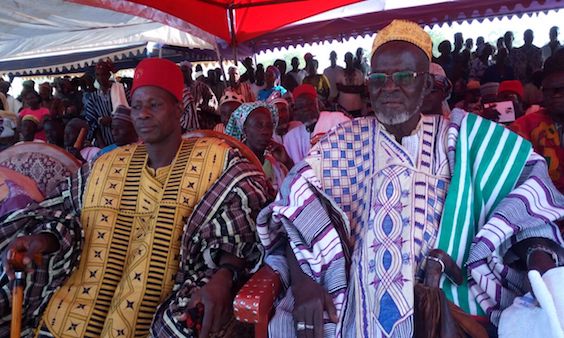The 1883 Native Jurisdiction Ordinance (Gold Coast Colony) of the colonial state, allowed Paramount Chiefs or head chiefs as they were termed, and their councils to have the option of making bylaws dealing with such local government functions as building and maintenance of roads, forest conservation, the prevention of abatement of nuisance, the provision of burial grounds and the regulation of burials.
According to section 29 of 1883 Gold Coast Native Jurisdiction Ordinance, the Governor-in-Council could remove a chief if he proved incompetent or unsatisfactory to the colonial state. However, traditional leaders were not compelled to seek recognition from the governor before they could exercise your jurisdiction, which was mainly in rural areas.
The 1904 Chiefs Ordinance was designed to enhance the authority of traditional rulers in the Gold Coast by having the governor officially recognize them as chiefs. This measure was optional and was not necessary for a traditional leader to act as a chief. It was designed to enable traditional leaders to enforce the laws of the colonial state. The 1902 Ashanti Administration Ordinance, in the wake of the Yaa Asantewaa War, stated that a traditional leader could not act as a chief until the governor had granted him formal recognition. Contrary to the legislative instruments used in the Gold Coast colony, the Ashanti Protectorate had security concerns that required more stringent control of the role of chiefs.
The 1935 Ashanti Ordinance and the 1944 Gold Coast Colony Ordinance also allowed the Colonial State, in the form of the governor to withdraw recognition for traditional leader acting as a native authority at any time. The 1944 Native Ordinance also required that the traditional leaders of the Gold Coast Colony on the coast had to be selected according to custom but they could not exercise the Native Jurisdiction until they had been recognized by the governor and only if the traditional leader acted in conformity with the policies on the colonial state.
By the time Kwame Nkrumah became Leader of Government Business in 1952, it had become obvious that having Chiefs who were not elected by universal adult suffrage, were a contradiction to the postcolonial state which was to have democratically legislative and executive institutions from Parliament down to local government. The first local government ordinance to reduce the power of chiefs was proclaimed on March 27 1952. This dismantled direct control by traditional leaders of local government but allowed chiefs to have 1/3 of the seats in the new local government councils compared to 2/3 of the council members who are elected.
The local government councils administered areas of jurisdiction matters as diverse as public order, building, road construction, forestry, wildlife and agriculture. In 1953 Municipal Council Ordinance, dealing with major urban centers reduced traditional leadership membership of Municipal Councils down to 1/6. The paramount chief of the area was a non-voting President of the Municipal Council. By 1957, the participation of traditional leaders in the municipal councils was again reduced. In spite of reducing the powers of chiefs, at the local government level, the 1958 House of Chiefs Act and the 1961 Chieftaincy Act reassured traditional leaders that the institution of chieftaincy and their powers to deal with customary matters were guaranteed. The establishment of Regional Houses of Chiefs also reinforced this.
